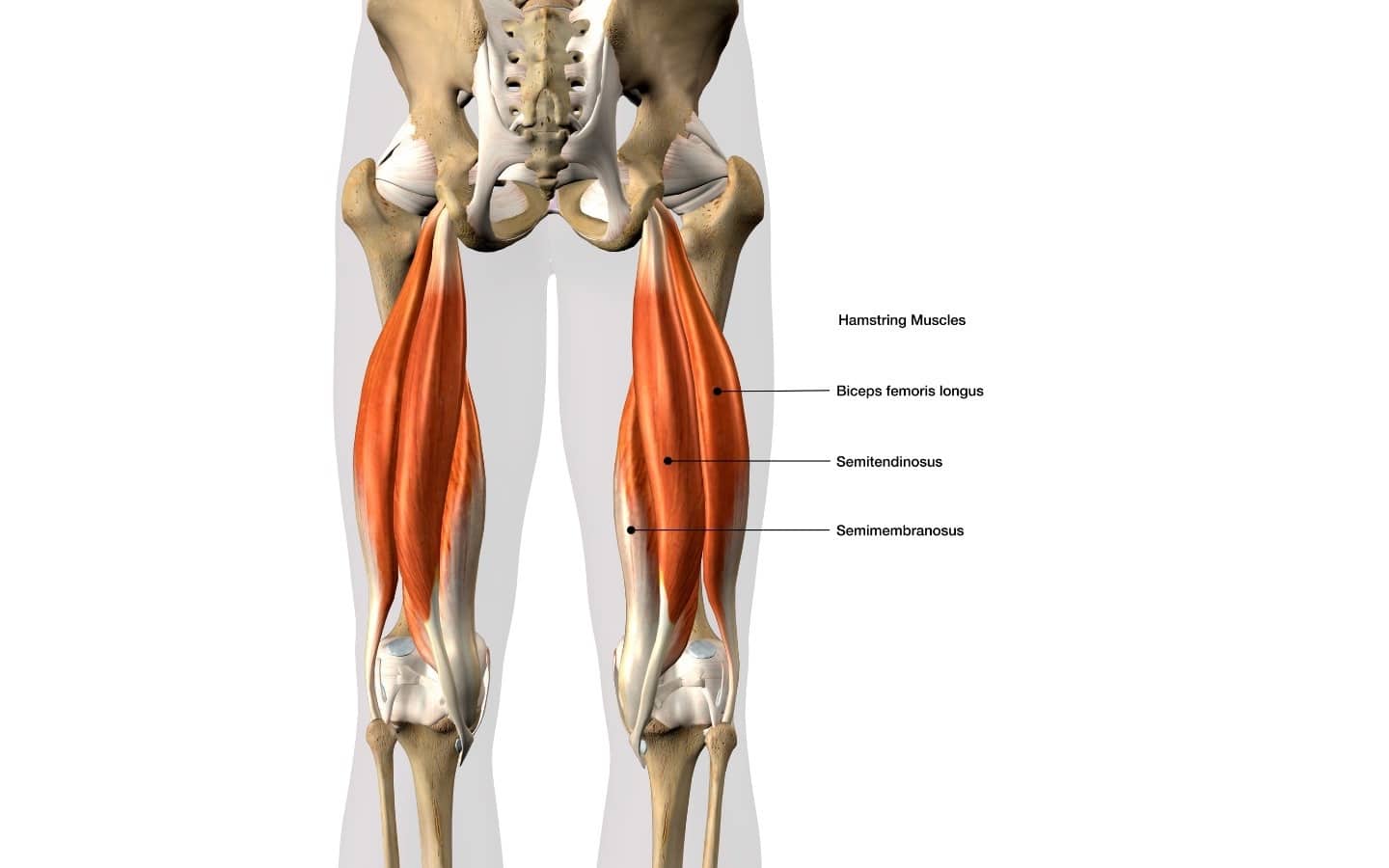
Anatomy Corner: Hamstrings
The hamstrings are a powerful group of three muscles located at the back of the thigh. Their primary functions include flexing (bending) the knee and assisting with hip extension. Additionally, they decelerate the lower leg during the swing phase of walking and play a crucial role in force production during jumping. When you push off to jump, the hamstrings contract concentrically (shorten) to provide power, then contract eccentrically (lengthen) to control the movement. While running, they generate force when pushing off the ground and lengthen during the swing phase, preventing excessive quadriceps contraction and stabilizing the knee.
The three hamstring muscles are:
1. Semimembranosus
2. Semitendinosus
3. Biceps Femoris (long and short head)
All three muscles, except for the short head of the biceps femoris, cross both the hip and knee joints and originate from the ischial tuberosity (sit bone). The semimembranosus and semitendinosus insert on the medial aspect of the tibia (lower leg), allowing them to internally rotate the lower leg when flexed. The biceps femoris, located laterally, externally rotates the lower leg when flexed.
Hamstring injuries often occur during dynamic activities such as running or jumping when the knee is forcefully extended. There are three grades of hamstring tears:
- Grade 1: A few muscle fibers are torn, causing pain and sensitivity, but knee flexion and walking are still possible.
- Grade 2: About half of the muscle fibers are torn, resulting in pain, swelling, and possibly bruising, which impacts gait.
- Grade 3: More than half of the muscle fibers are ruptured, sometimes all of them (also known as Grade 4). This can occur at the muscle or tendon level, and surgery is usually necessary if two or more muscles are completely ruptured and retracted more than 2 cm.
Risk factors for hamstring injuries include:
- Previous hamstring injury
- Previous calf injury
- Previous significant knee injury
- Poor core strength
- Tight hip flexors
- Muscle strength imbalances
To prevent hamstring injuries, especially if you have a history of prior injuries, it is recommended to maintain a consistent program of core and lower extremity strengthening, stabilization, and flexibility training. If you participate in sports requiring powerful bursts of activity, incorporating plyometric exercises into your program is also beneficial. Speak with your physical therapist if you think you might be at risk for a hamstring injury and they can tailor a program for your specific needs!
By Deanie Barth

